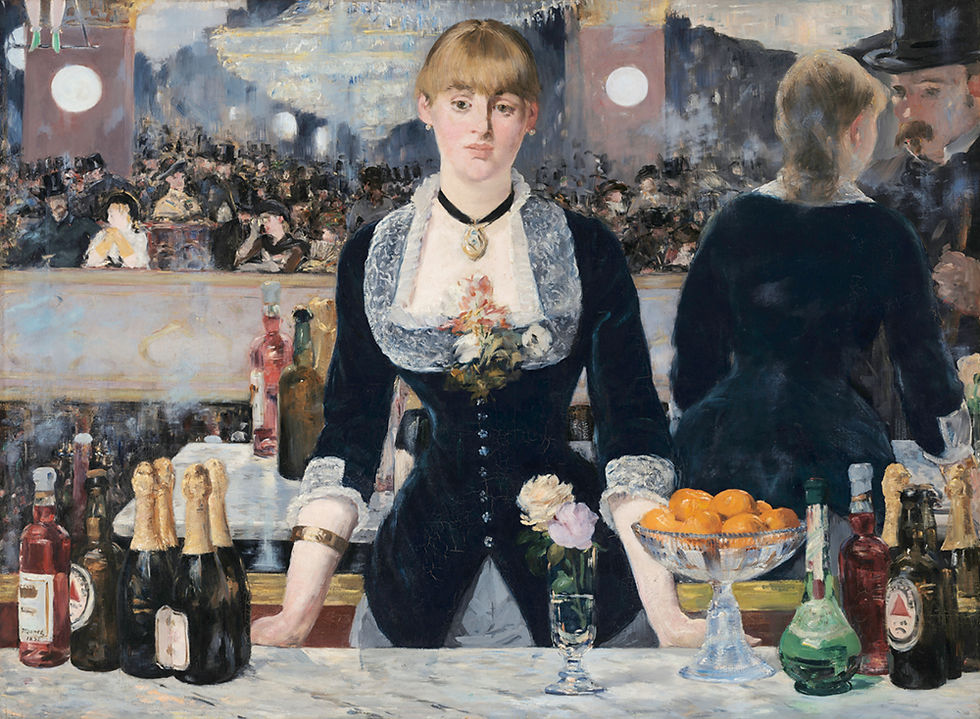Impressionism; The pinnacle of painted art forms?
- Lee Tiller

- Mar 7, 2022
- 3 min read

Is impressionism the pinnacle of art forms?
Many years ago, and certainly before I had discovered the delights of adolescence, I would sit before a canvas and strive to capture each detail of every leaf, feather, pebble or wispy strand of hair. I remember staring in awe at my fellow and occasionally gifted school mates who possessed the singular ability of capturing a lifelike image. It seemed too conincidental that they seemed to attract the most beautiful girls too. I wondered if maybe it was a demonstration of adolescent masculinity.
Applied to my own art, I considered it a magnificent achievement whenever I reproduced something close to replicating a photographic likeness. Often I succeeded, although I still didn’t get the girls. Clearly I had a lot to learn.
I recall feeling rather miffed (great English word) when a ‘friend’ looked at one of my ‘best’ pieces and referred to it as ‘pedestrian’, and then proceeded to show me a painting of a Japanese bridge and some waterlilies by some chap I’d never heard. My friend wasn’t a painter himself, so when he mentioned Monet and Manet in the same sentence, I thought he was jesting or perhaps I had misheard him.
Yet for me, that moment was an epiphany. A eureka moment. I had discovered my truth in art.
Since the mid 19th Century, as an instrument for recording history and harnessing a particle of time, the camera has transformed and influenced our lives and furthered our understanding of the wider global community.
As a visual aid, it presents a clinical yet superficial view of the world. A camera is technologically very smart, yet it is not a human eye and is therefore limited in what it can capture. For a start, there is something called ‘exposure latitude’ which essentially impedes the amount of information available from brightest lights to darkest darks. Basically shadows become heavy and black, and highlights white and colourless. It is 'magnolia' for the discerning mind. The human eye has no such issue.
Impressionism is much more closely aligned to what the human eye can register than that of a mere photograph. Within the shadows of an impressionist painting you will discover minute variations of colour, tone and tint, some of which are often surprising. There is local colour and reflected colour too. One touch of colour will subtly change our perception of its neighbouring colour. I liken it to the sound of a harmonious musical chord. Get one note wrong and the sound is discordant.
For instance a white horse is never simply a white horse. The grass is reflected on its belly, environmental light is reflected on to its sides and sunlight illuminates its back. The sunlight itself can be diffused, direct, in front or behind, and there are myriad qualities of brightness, hue, colour temperature and light intensity. Time of day, weather, humidity, air quality and atmosphere will all affect what the viewer sees.
Impressionism, and impressionism alone, recreates or at least suggests the existence of these mysteries and nuances of nature and strives to recreate the original visual sensation. That then is the essence of impressionism, to recreate the fleeting immediacy of a moment, and the sensation of what the artist experienced. In 1880 it was a breathtaking departure from convention and 'pedestrian' art.

When you next stand before an impressionist painting analyse it in its entirety. Take it all in. What do you feel? See the example here of a painting I completed during the Covid lockdown (I appreciate that you're only seeing a small verson on your digital device).

Then look at the close up’s showing the broken colour technique. Maybe you’ll be surprised to discover colour, hue and tone that are not immediately obvious in the full painting. Yet when standing back, these touches of paint combine and create harmonious effects.


I once read an article by the wonderful musician Chris Rea, who whilst recovering from surgery for pancreatic cancer, would stare at a print of a painting by Monet on his hospital wall. He said he would attempt to count the number of colours he could see, although I think he always gave up. It certainly calmed his mind though and probably contributed to his healing. He's become a great painter too.
No other artform can achieve the depths of sensation achieveable with Impressionist art. Abstract art cannot, abstract expressionism won’t come close, tonalism and realism tries, but they all pale in comparison. That’s why I believe that ‘Impressionism’ is the pinnacle of painted art forms. It's still my view after painting for over 50 years (including spells using each of the previously mentioned styles).
If you have an alternative view, I’d love to hear it. Wishing you all a great day.
Best wishes, Lee Tiller




Comments